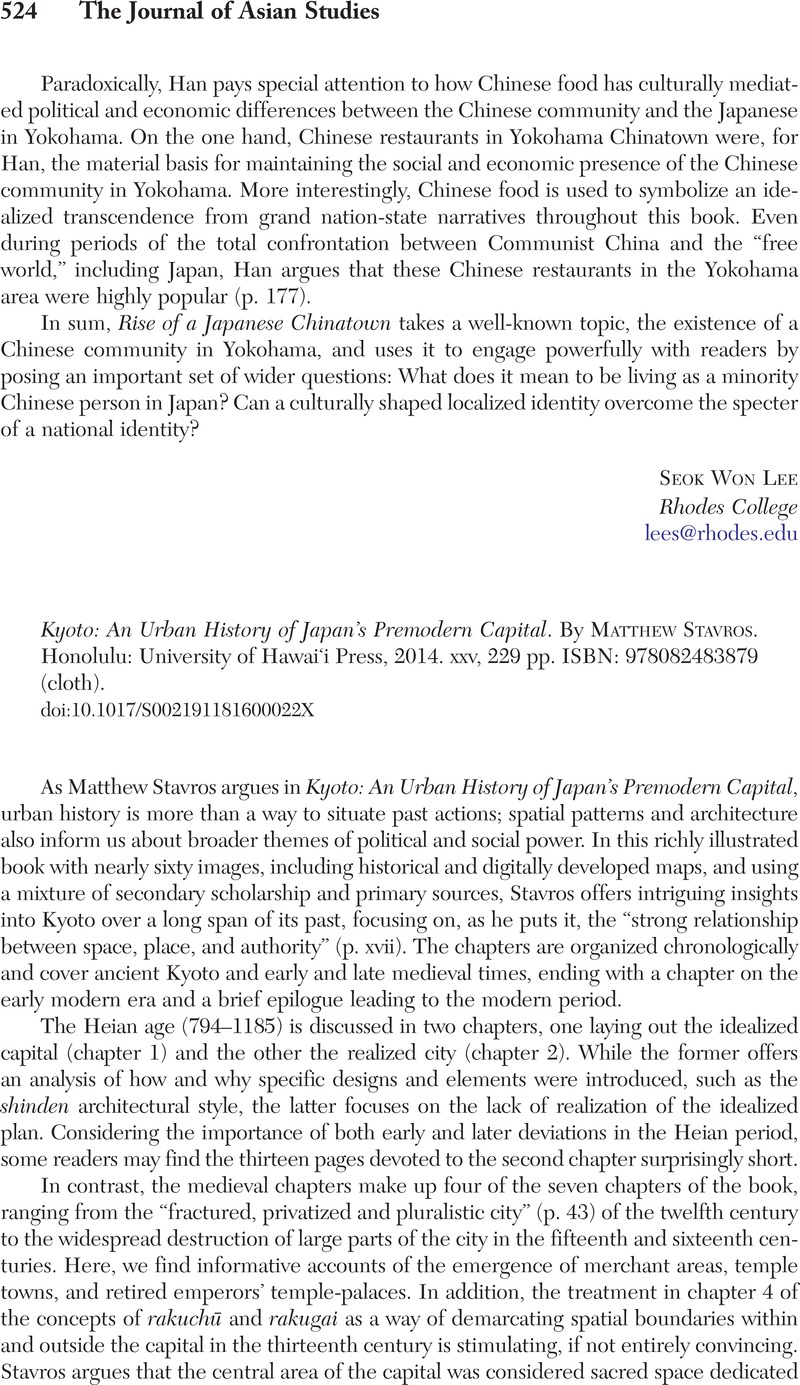No CrossRef data available.
Published online by Cambridge University Press: 29 April 2016

11 The author cites volume 1, but likely meant to refer to chapter 1 of volume 2.
12 Ihara Keaso, Nihon chūsei no kokusei to kasei [State rulership and family governance in medieval Japan] (Tokyo: Azekura shobō, 1995). For a critique of Ihara's interpretation, see, e.g., Endō Motoo, Chūsei ōken to ōchō girei [Medieval royal authority and court ceremonies] (Tokyo: San'yōsha, 2008).
13 See, e.g., Kuroda Toshio, Jisha seiryoku: Mō hitotsu chūsei no shakai [The secular power of temples and shrines: Another medieval society] (Tokyo: Iwanami shoten, 1980). Oddly enough, while Stavros refers to kenmon on numerous occasions, Kuroda's works are not mentioned.
14 Keirstead, Thomas questions the use of “medieval” in the Japanese context in his “Inventing Medieval Japan: The History and Politics of National Identity,” Medieval History Journal 1, no. 1 (1998): 25–46CrossRefGoogle Scholar.
15 For recent critiques of applying the feudal paradigm to Japan, see, e.g., Mikael Adolphson, “Social Change and Contained Transformations: Warriors and Merchants in Japan, 1000–1300,” in Eurasian Transformations, Tenth to Thirteenth Centuries: Crystallizations, Divergences, Renaissances, eds. Johann P. Arnason and Björn Wittrock (Leiden: Brill, 2004), 309–37; and Friday, Karl, “The Futile Paradigm: In Quest of Feudalism in Early Medieval Japan,” History Compass 8, no. 2 (2010): 179–96CrossRefGoogle Scholar. For a Japanese critique, see Hotate Michihisa, Rekishigaku o mitsumenaosu: Hōkensei gainen no hōki [Reflecting on the discipline of history: The renunciation of the concept of feudalism] (Tokyo: Azekura shobō, 2004). In Europe, Susan Reynolds's study, Fiefs and Vassals: The Medieval Evidence Reintepreted (Oxford: Oxford University Press, 1994), launched a scathing critique of the assumptions underlying the use of the feudal paradigm. See also Hyams, Paul, “The Death of Feudalism,” Journal of Interdisciplinary History 27, no. 4 (1997): 655–62CrossRefGoogle Scholar.